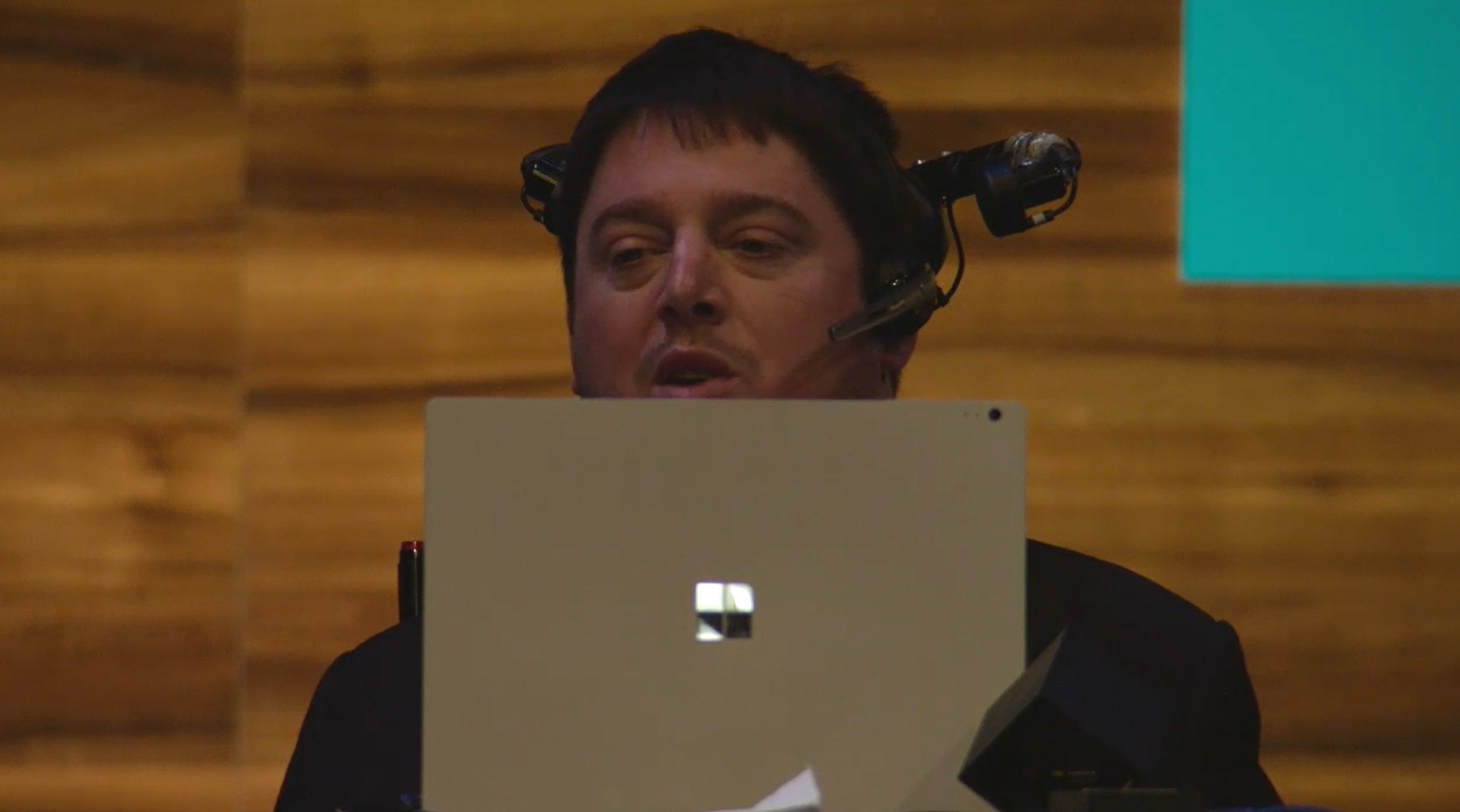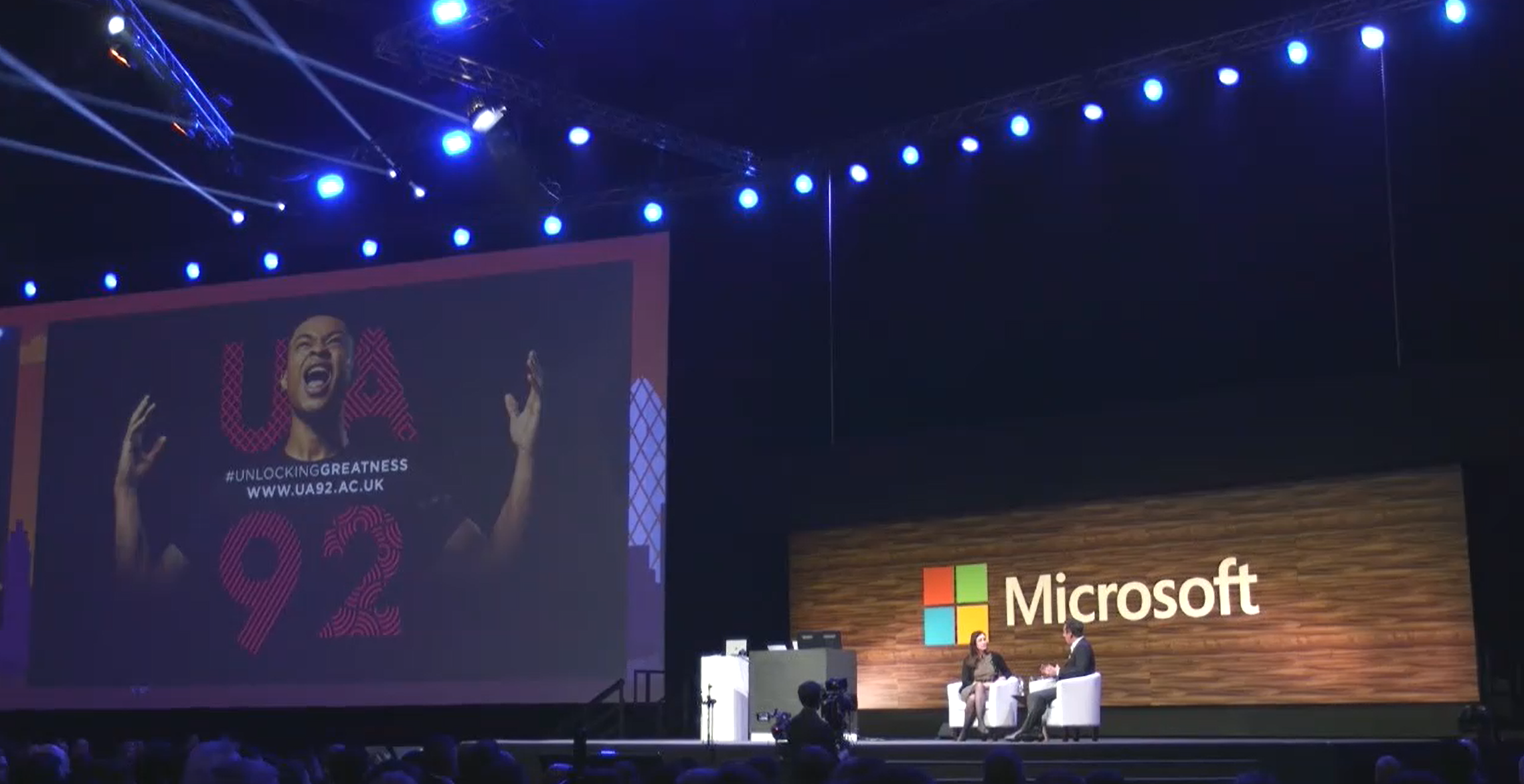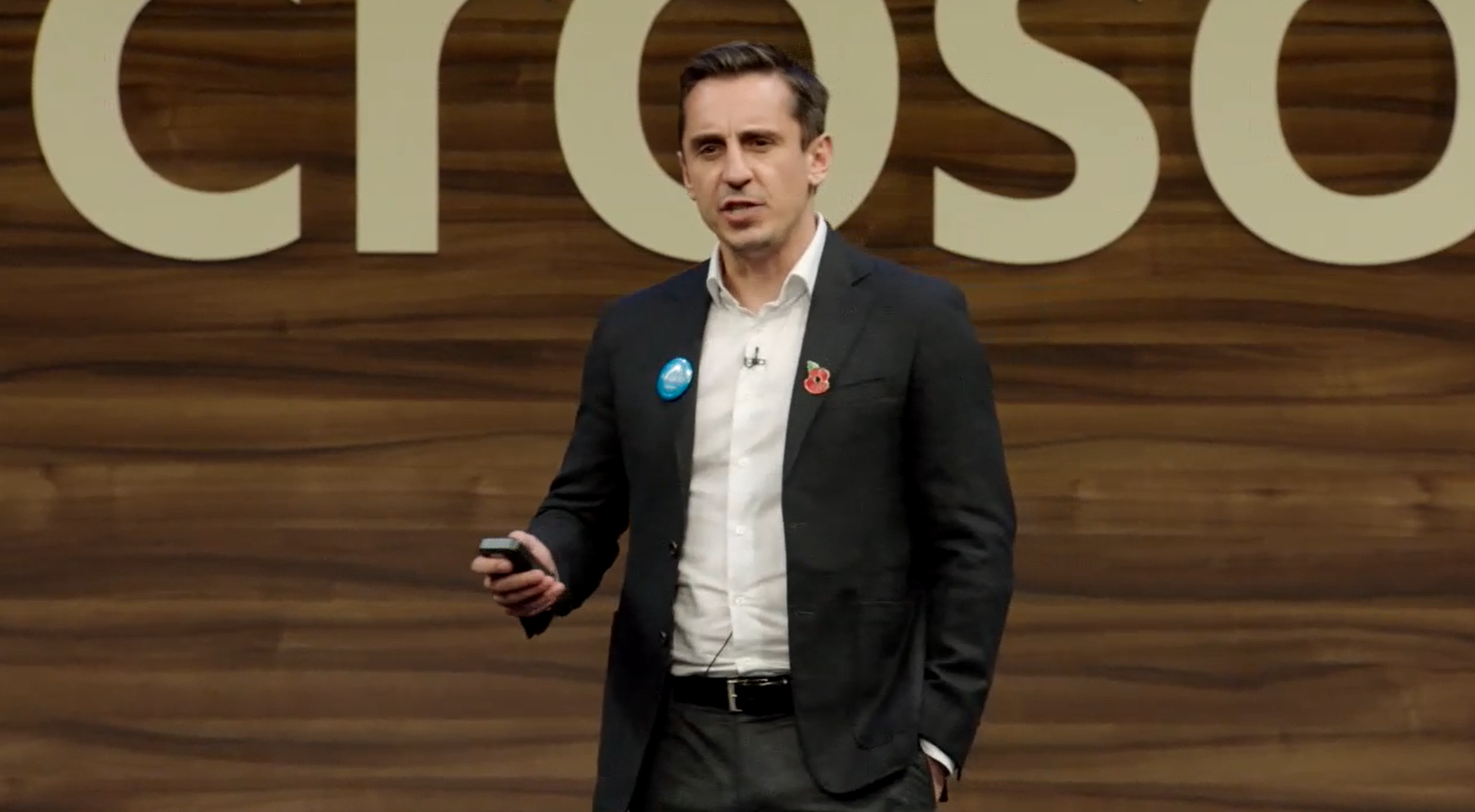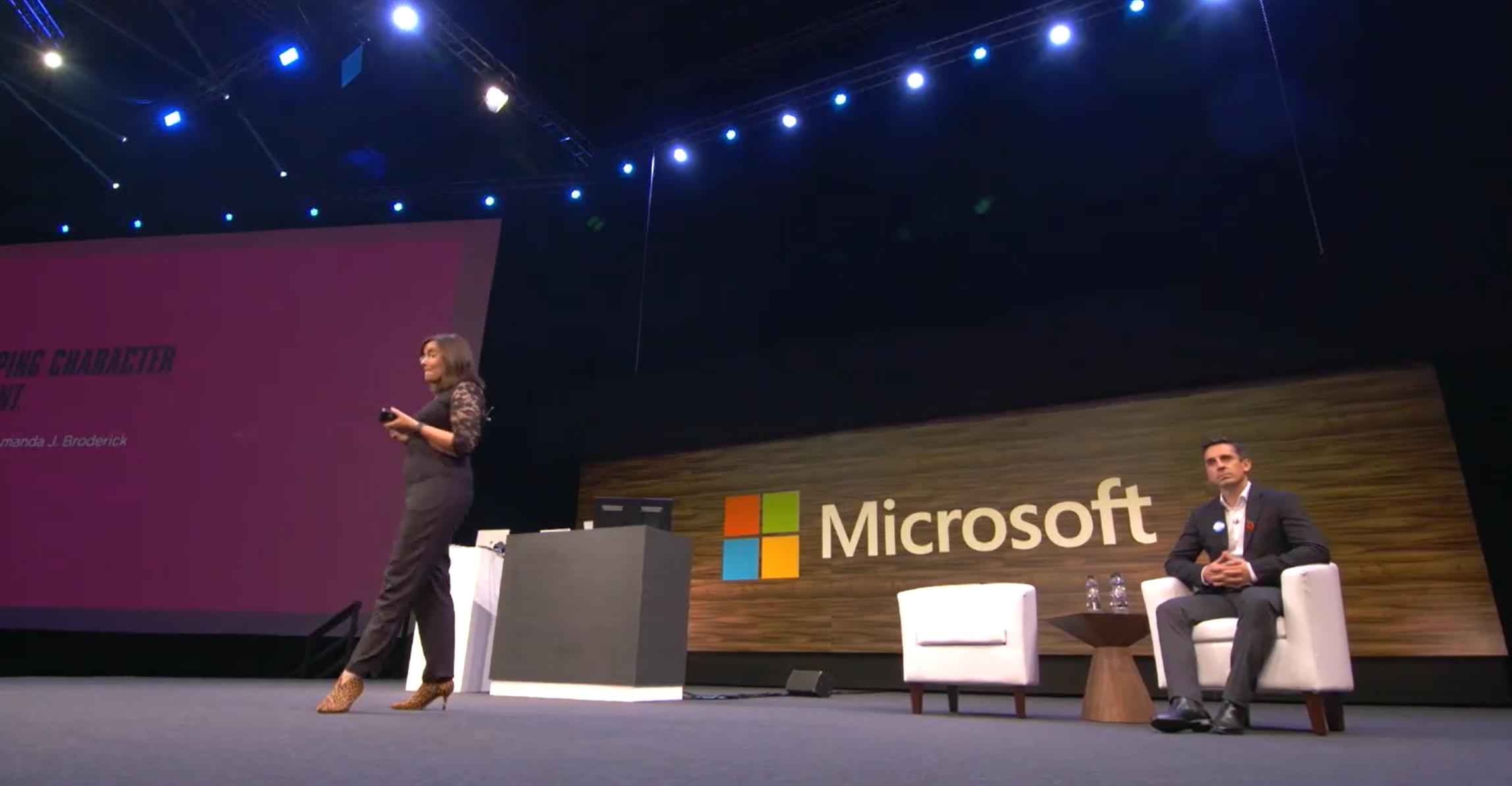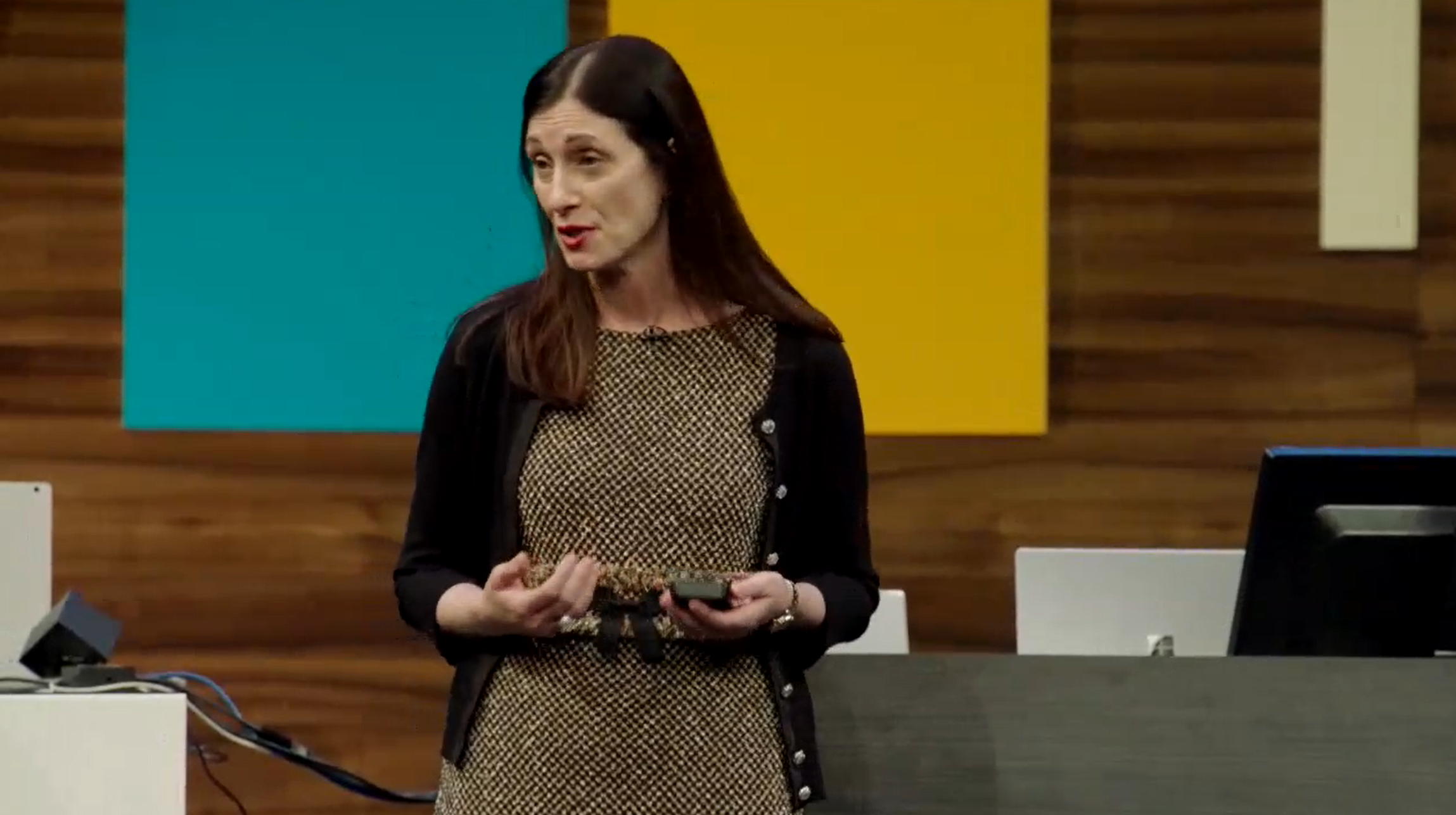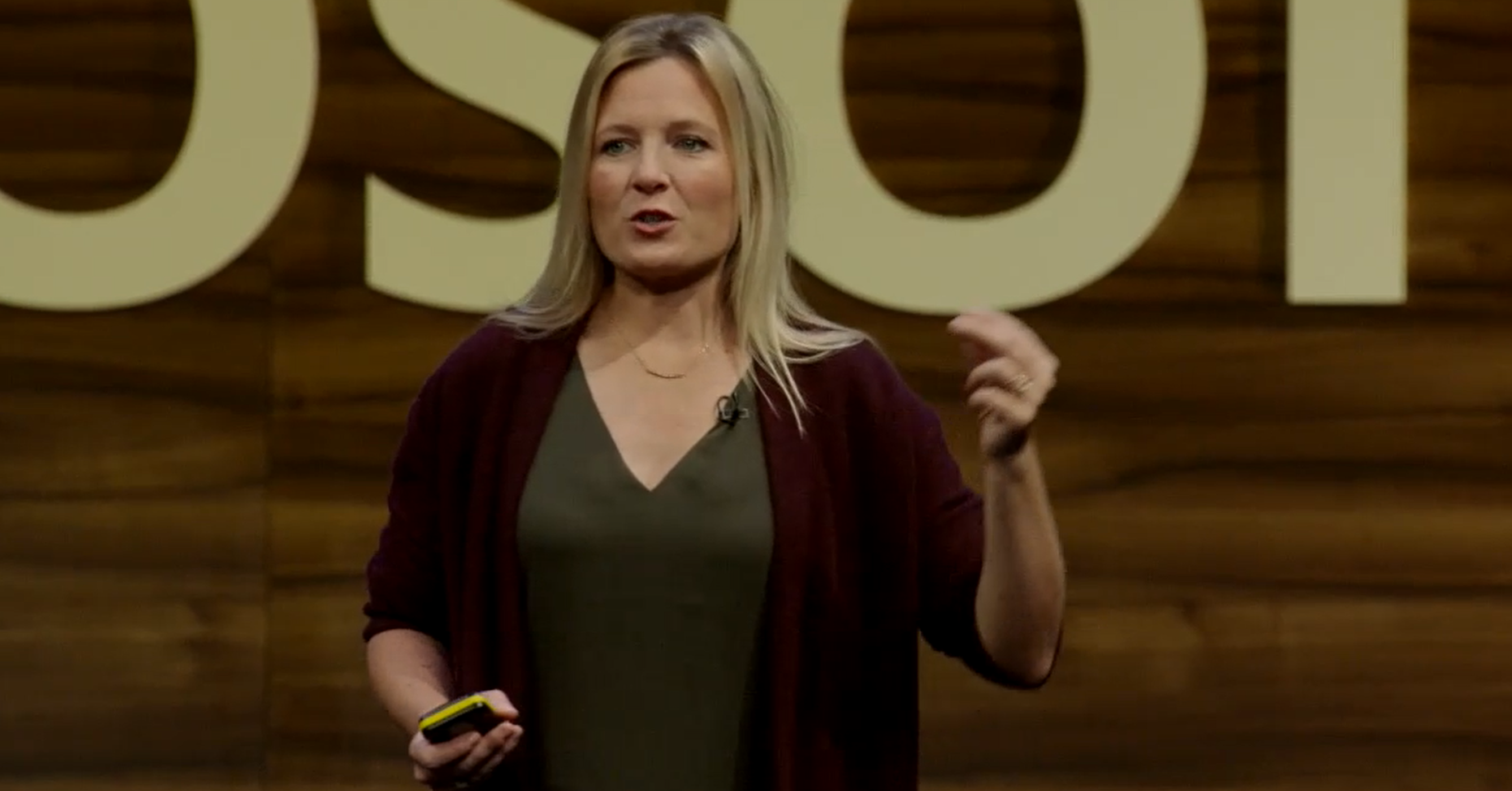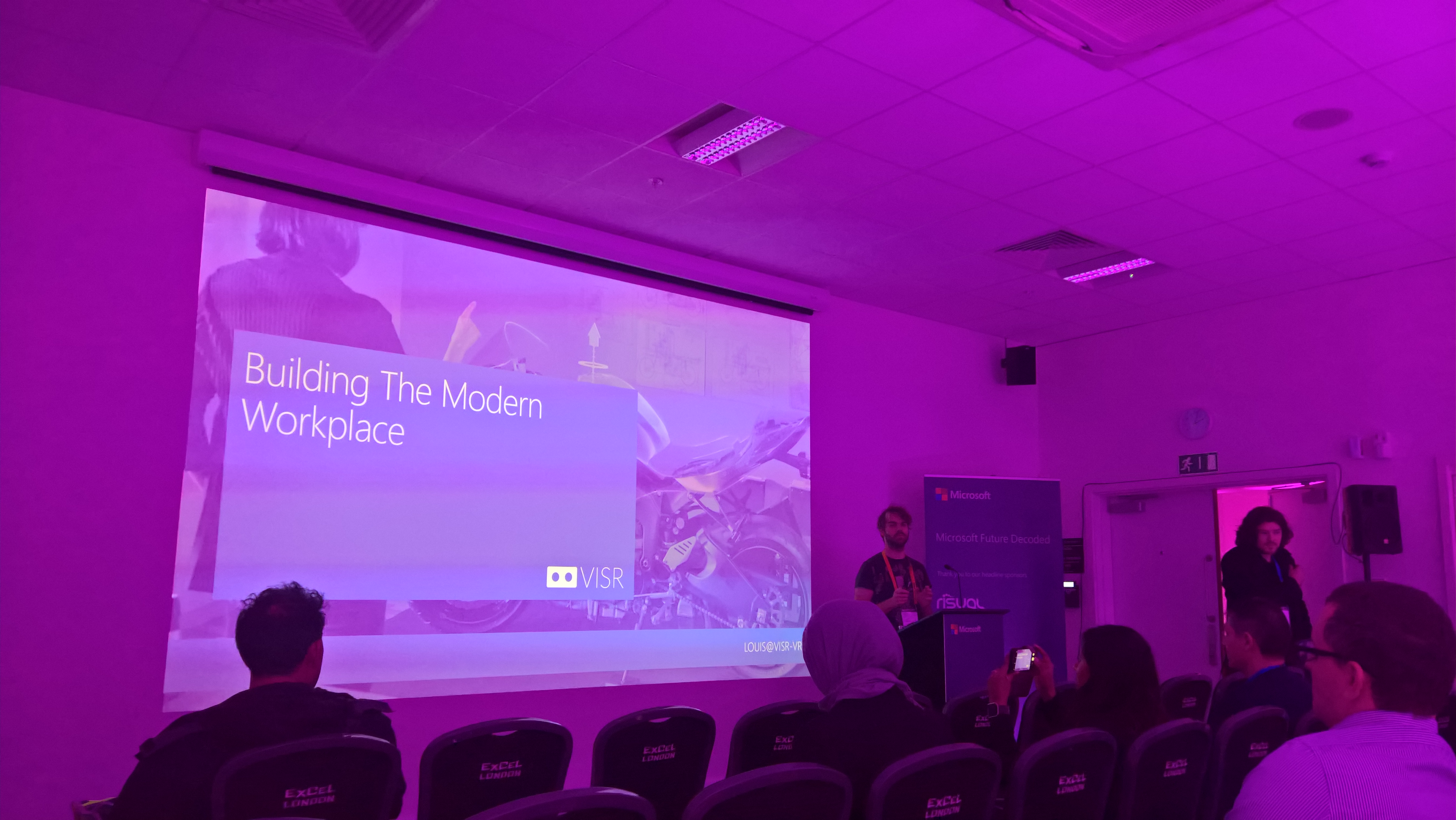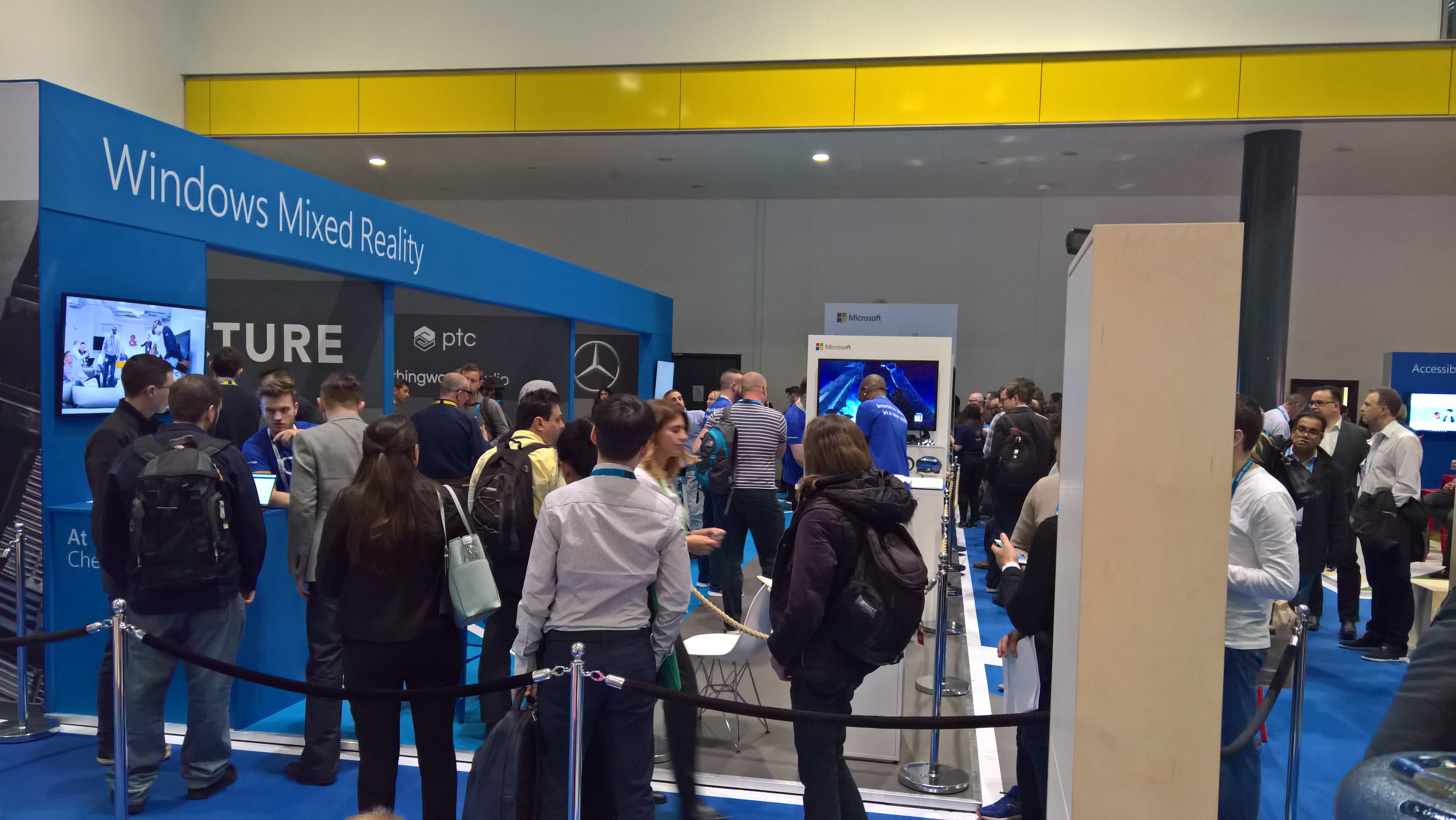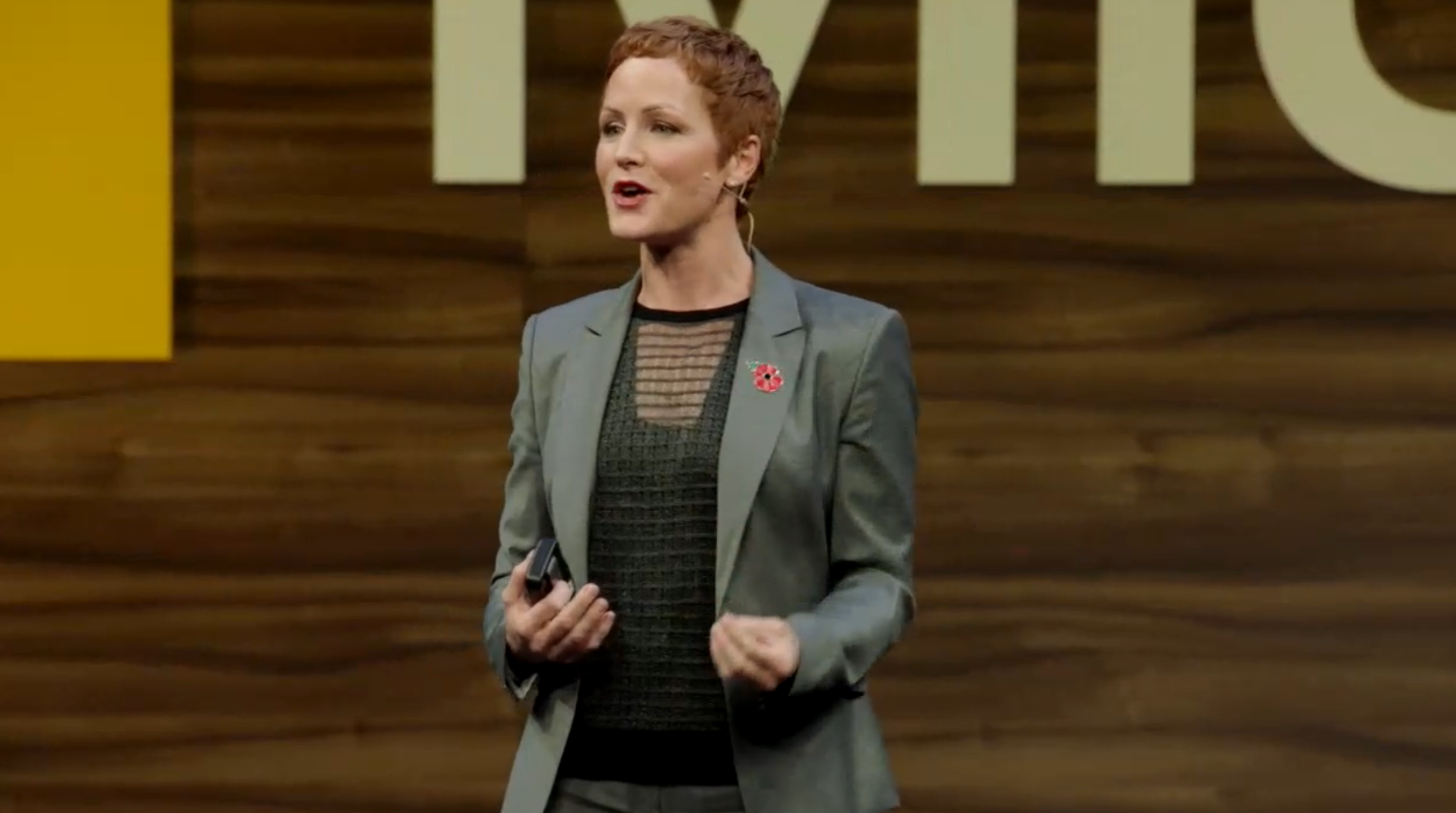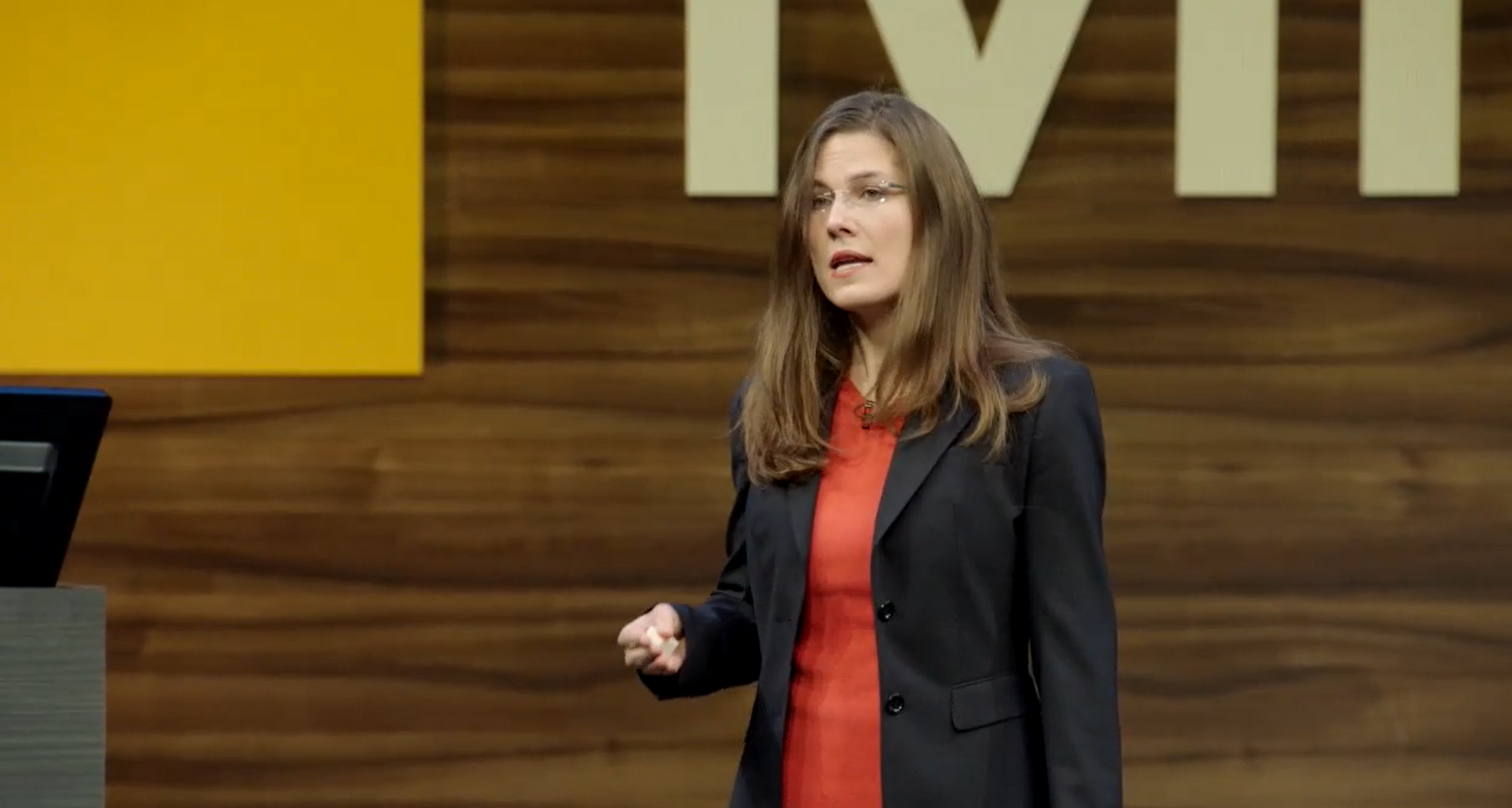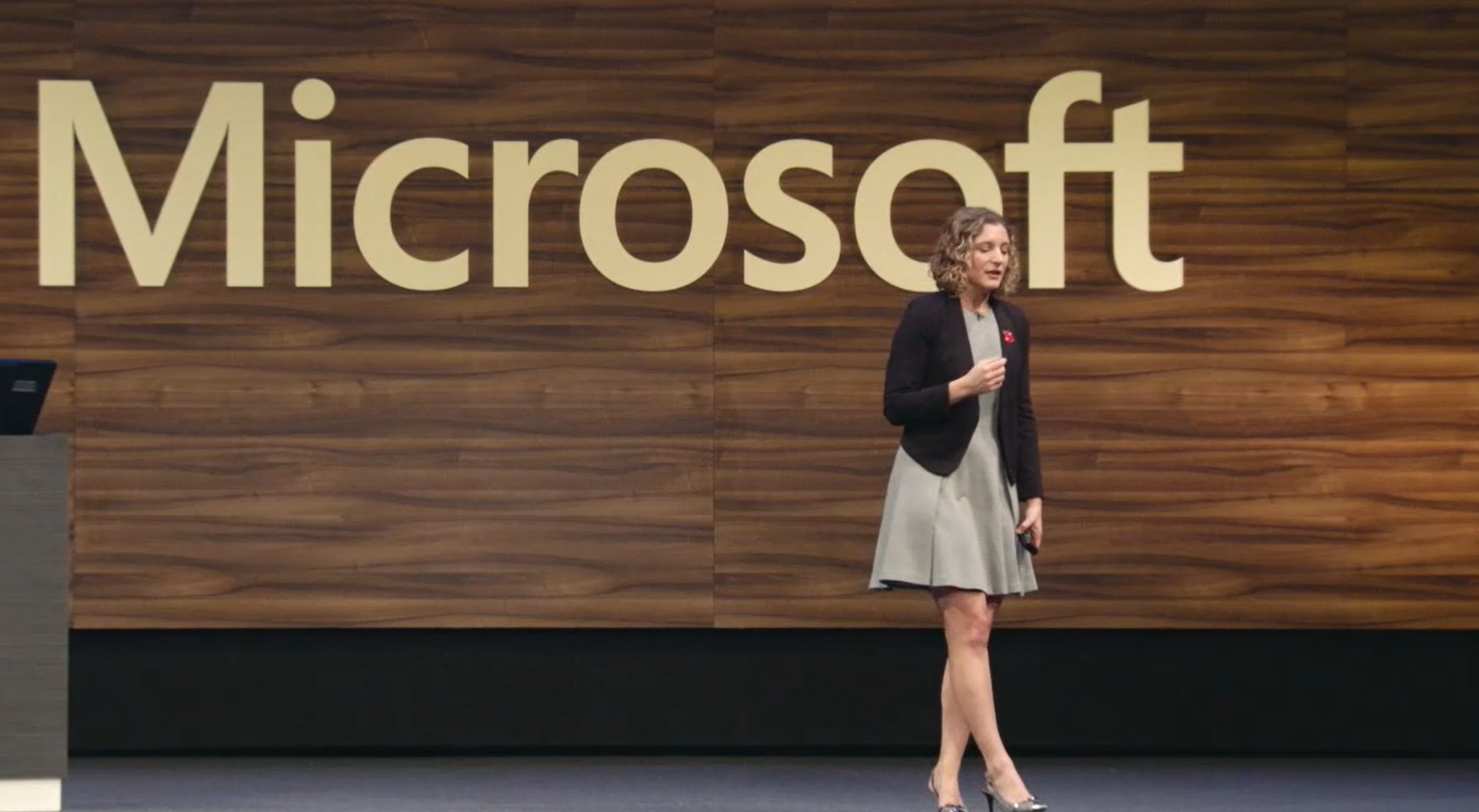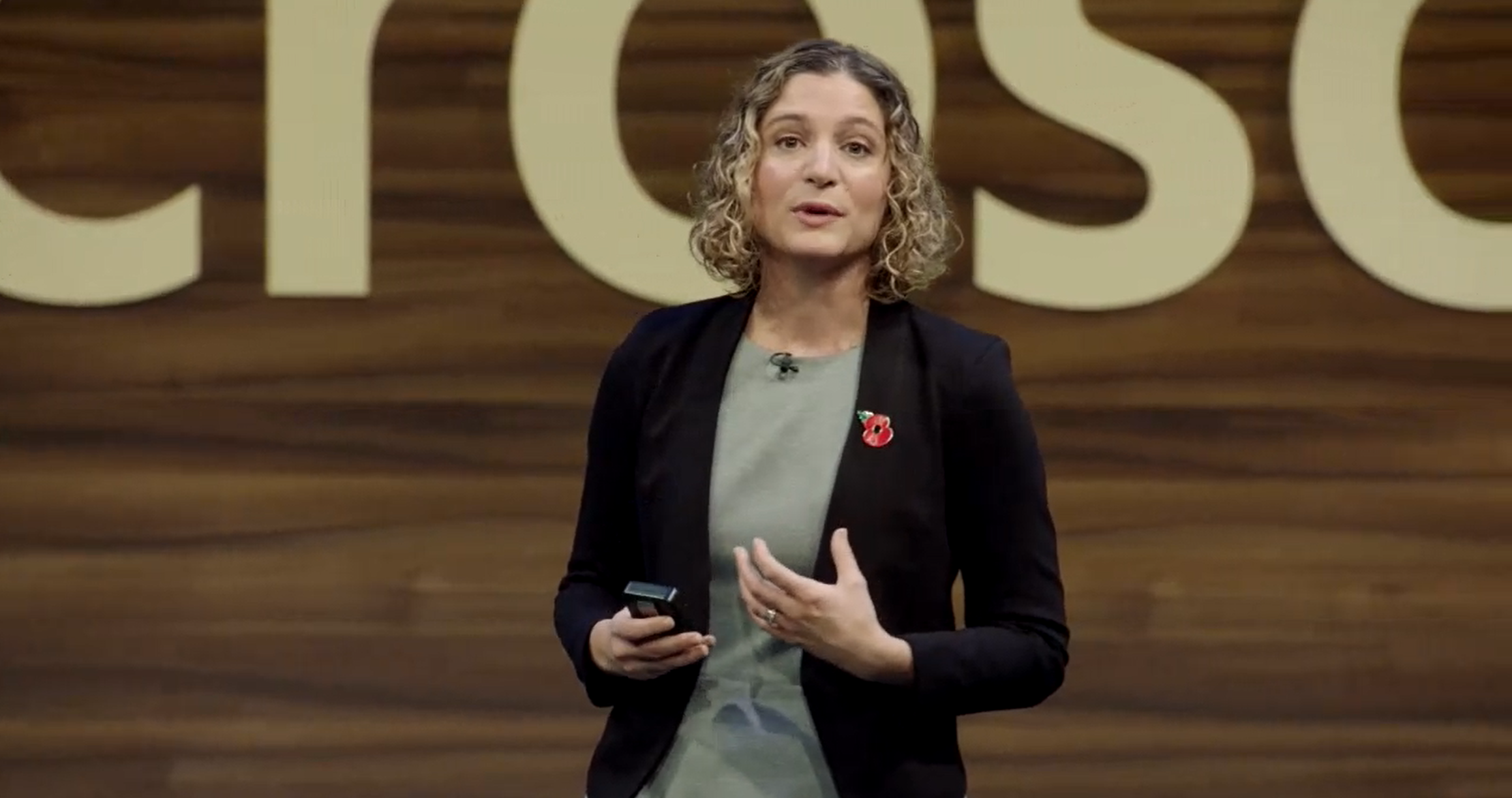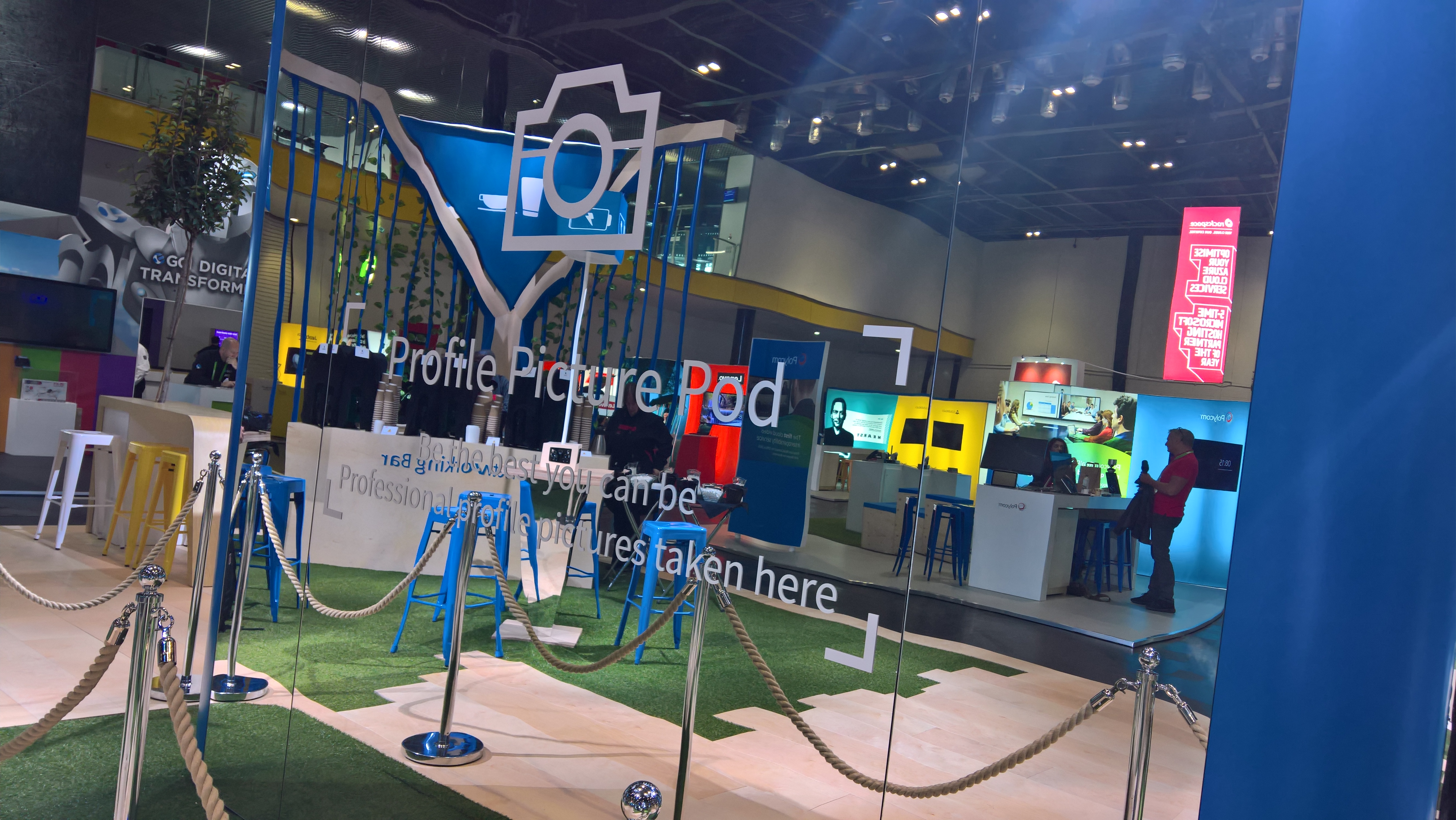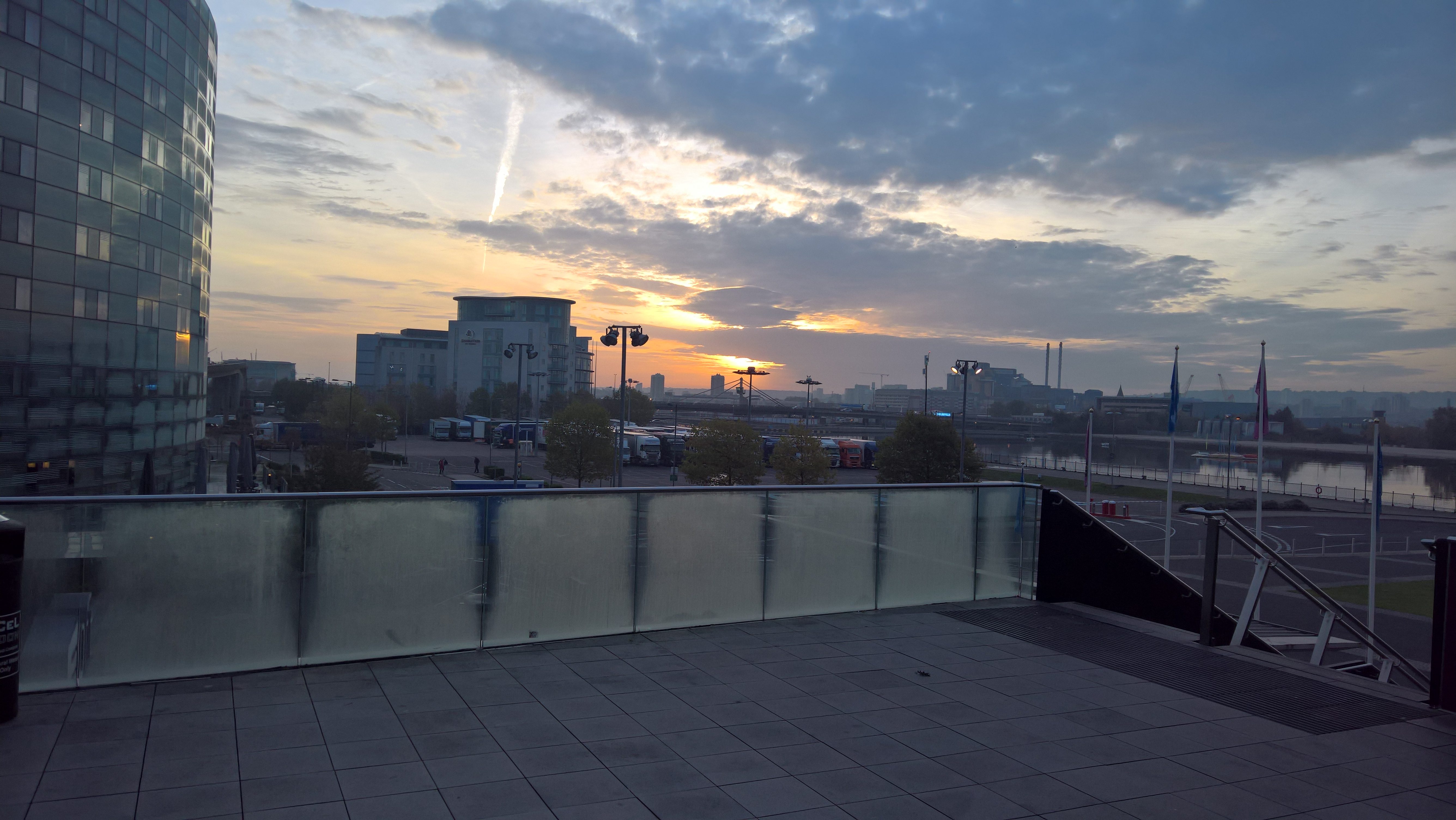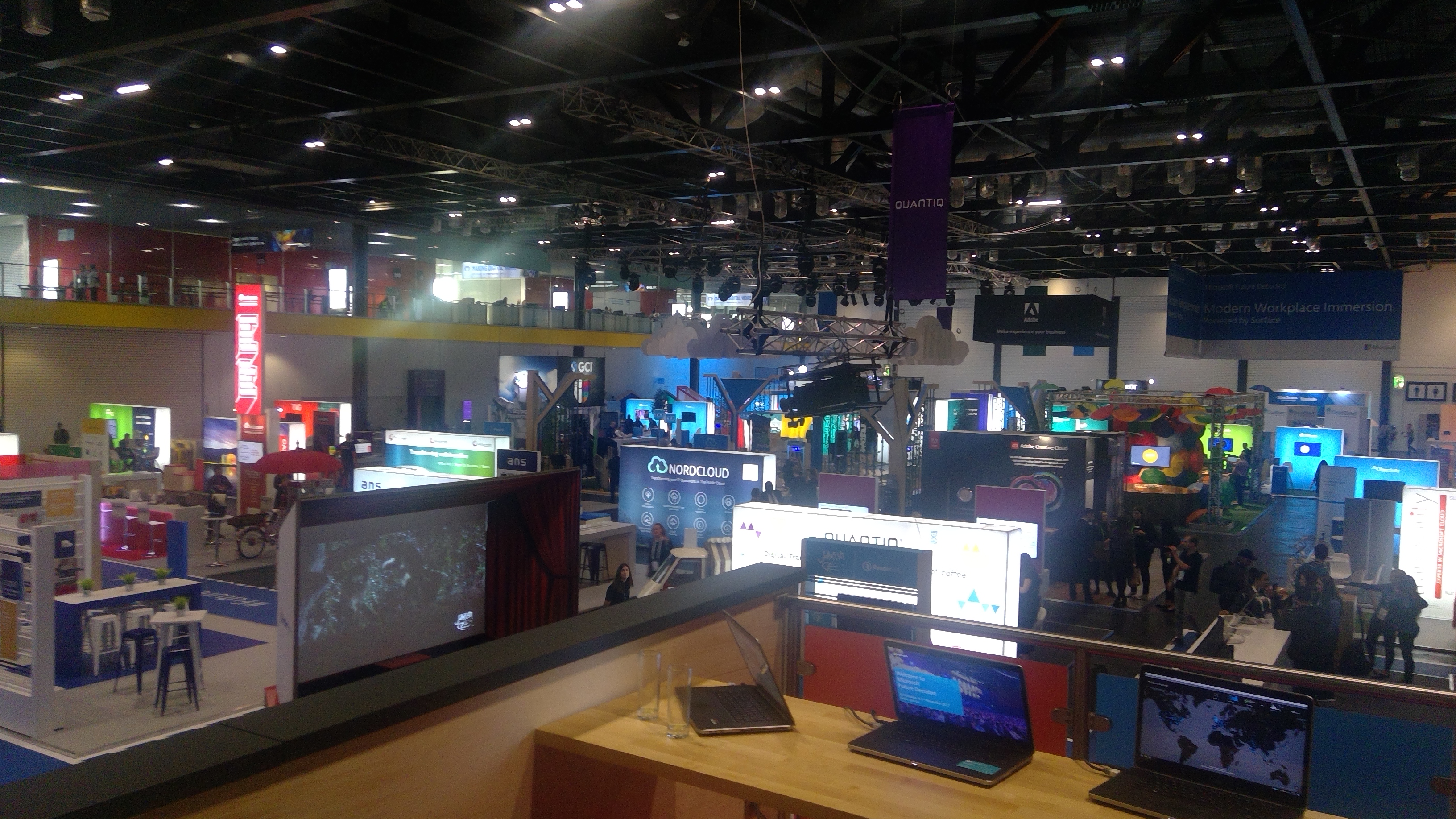
Future Decoded 2017: day two – as it happened
- HoloLens rolled out to additional 29 countries, taking total to 39; hardhat accessories also in production
- Day two of Future Decoded gets under way at the Excel in London
- Speakers include Lorraine Bardeen, from Windows and HoloLens, Microsoft UK CEO Cindy Rose and former footballer Gary Neville
- Future Decoded: day one – as it happened
- Panos Panay revealed that Surface Book 2 13-inch coming to UK in November, 15-inch coming early next year
Latest
17:54
Zhang closes Future Decode by thanking everyone for coming.
That’s it, the amazing Future Decoded is over for another year. Thanks for reading, we hope you had fun and learnt about digital transformation and the future of technology. Check out our UK News Centre for more information on Microsoft. Goodbye.
17:51
Nabarro: Every one of us has reduced ability at some point. We can all improve and augment our computer use by using assistive technology. It’s for all of us. It allows us to make the most of our time, which is the most important thing we have.
17:47
Tom Nabarro, a developer at Intel, now on stage. He was injured in snowboarding accident. He uses voice, gaze control and gestures to help him use technology. It “helps my life flow along better. With things like Windows Hello, I have more control and privacy.” Nabarro using voice and sight to control Cortana.
17:43
Zhang: For the first time, I can add subtitles into PowerPoint presentations. We can translate over 60 languages and this can be done on the spot or remotely. By making subtitle tech easy to implement and use, we hope to remove some of the stigma around hearing loss.
Demo of Presentation Translator. Zhang speaks Chinese, and it’s automatically translated into English on screen.
17:38
Demo on stage of Narrator on Windows 10:
17:28
Haiyan Zhang, Microsoft Innovation Director, now on stage. “Disability is one of the biggest challenges we are facing in the world today. Finding a solution that helps someone with an upper limb disability might help someone with an arm issue. We have opportunities in tech that look different to what we had even five years ago. We revisit old challenges with tech such as AI, machine learning and cloud.”
17:24
Jochelson: We want to support those that can work into employment. We are pleased to have Microsoft on board to help in this area. There is a lot of exciting potential in assisted technology. We need to make sure that everyone who needs this has access to it. Technology will play an important role in improving the lives of disabled people. It’s great to see Microsoft building accessibility into its tools. Accessible design is good design that works for everyone. It’s a spirit of innovation.
17:18
Karen Jochelson, Head of the Office for Disability Issues, takes to the stage. “We want to remove barriers so disabled people can fulfil their potential. It’s increasingly clear that bringing disabled people into the workforce brings new problem solving skills and more inclusivity and an empathetic workforce. Microsoft shows what be achieved in terms of bringing people into the workplace. Microsoft uses non-traditional interview processes to help many disabled people get past the first barrier to work that so many people experience.”
17:14
Neville: Hard work was at the heart of everything Alex Ferguson did. Get up every day, work hard, do your best, because that’s what’s in your control.
17:12
Cindy Rose now interviewing Gary Neville on stage. Neville: “Microsoft is a global brand, fantastic company. I walked into the London office and everyone was vibrant and happy, what a place to work. The values are aligned in terms of culture, the value of empowering people to achieve more. There is an alignment of Microsoft’s culture and what we are trying to do.”
17:09
Neville: These are 10 simple things that can be taught at university. The most important thing is young people finding employment. Through conversations with Microsoft, we added an 11th pillar – digital literacy. You need those skills today. What is success for this university? They have a business degree, they have a developed personality, and they are ready to come and work for a company.
17:03
Neville: I have a list of 10 things I would like my children to learn before they are 21:
17:02
Neville: Under 25 years of working under Sir Alex Ferguson I never heard him fail to mention how it was important to never give up. We have a responsibility to put character at the heart of education. With UA92, a new university I have set up with the Class of 92, we put character development at the heart of learning.
16:55
Broderick: Emotional intelligence and physical skills such as attention and resilience, self-control, manage stress are important. With technology, we are now able to collect data from the body, such as stress levels and heart rate.
16:49
Broderick: Generation Z are likely to have jobs that have not been invented yet. How do we ensure they have the right skills? They are first generation to grow up fully connected on mobile devices and the internet. Five years from now over one skills that are considered important now will have changed. AI and robotics, machine learning, advanced materials, these developments will transform the way they work and live. What is certain is future workforce will have to align its skillset to keep pace.
16:44
Rose: Digital transformation could impact on traditional jobs. Our report showed that six out of 10 workers in UK are concerned about tech impact on jobs. We must acknowledge that but also help people build skills to prepare for the future. In January, we launched a programme to help people build skills to meet the needs of the future. This will help create a strong talent pipeline and empower people.
Our bold ambitions requires a new way we approach partnerships.
Now welcoming former Manchester United star Gary Neville and Amanda Broderick, from Newcastle University.
16:38
Rose: We know tech is the enabler of digital transformation, but we know this kind of change has a significant human component, too. Microsoft has had to adopt a new mindset, while embracing new ways of working. When you transform, it’s important that you don’t throw away those parts of your business that makes it special.
16:33
Rose: We have more fantastic and inspiring sessions lined up. This is our fourth Future Decoded, 40% more attendees than last year. That shows how relevant and timely digital transformation is. We are here because we want our organisations to remain relevant and last for many years to come.
16:31
Here we go! Microsoft UK CEO Cindy Rose on stage.
16:21
Almost time for @GNev2‘s keynote at #FutureDecoded! Who’s coming? #ua92 pic.twitter.com/cLfTqYl8LT
— UA92 (@UA92MCR) November 1, 2017
16:01
We are heading towards the final keynote of the day, on empowerment. Speakers include Microsoft UK CEO Cindy Rose, former Manchester United star Gary Neville and Microsoft Research Innovation Director Haiyan Zhang, among others. That’s coming up at 4:30pm. We’ll have the latest here.
15:43
What problem would you tackle first if you could turn on a quantum computer today?
Svore: “We would love to tackle global warming. News reports recently announced the highest level of CO2 ever recorded, and that’s frightening. We would love to find a catalyst to extract carbon and combat global warming. We also want to tackle issues with global food production.
“But with every question we answer we will get more questions. What else do atoms play a role in? It will give us the ability to solvelook at another level of the world.”
15:40
What are the challenges?
Svore: “There are many challenges, ranging from how do we use qubits to solve big problems to how do we educate a world of developers who don’t know quantum mechanics. Getting a solid foundation of qubits is also a challenge; we believe ours is more robust and easier to scale. These challenges are all equally important to overcome. Microsoft is in a good position to develop these solutions. We have a team that’s ready to meet these challenges head-on to develop the most efficient solution.”
15:36
We asked Svore where Microsoft is placed in building a quantum computer. In short, we are not there yet, but then again, no one is.
“We are trying to put the components together, it’s in the engineering stage. There are quibits and software and many other things, but getting them to work together and make it scalable means getting lots of people to come together. Historically, these people worked in isolation on this problem, Microsoft’s plan was to bring them together, a dream team, to rapidly innovate around a solution. We want to achieve a scalable, programmable quantum computer.”
15:00
We’ll be sitting down with Dr Krysta Svore from Microsoft Quantum Research to talk about all things quantum computing in a minute. Very exciting technology.
14:57
Joining Aggreko for that talk was Hiscox:
‘The biggest risk, is not being in the cloud’ Jonathan Fletcher @HiscoxUK #FutureDecoded #Azure pic.twitter.com/GO28hpEI23
— Microsoft Business (@MSFTBusinessUK) November 1, 2017
14:39
Over on the main stage, Steven Faull, Head of Software and Analytics at Aggreko, is finishing up his talk on the cloud. We have more talks on the cloud from Daisy Group, National Trust and more at 3pm.
14:23
That’s the end of that workshop. Really interesting look at how HoloLens can help in a range of sectors, and how VISR is helping businesses use that technology effectively and easily.
14:22
Deane: This tech is called Vertx. We care about how you store information, so the storage is backed by Azure.
Question for Deane on using HoloLens and mixed reality on construction site. “Sounds brilliant,” business owner says.
14:16
Deane: Everyone should be able to author 3D content; if you democratize technology then the value of it increases. HoloLens is pushing the boundaries and empowering people. With VISR, you can embed 3D images in text and messaging apps, so you can communicate more effectively. Our platform can use any 3D model program, drop it in and it works, without coding. Now, you can bring digital 3D assets into a room with you.
14:11
Deane: We are obsessed with spreadsheets and 2D communication, so we are missing opportunities in 3D. Every time you send information and print it out, you lose data and innovation. Technology is not supporting concepts, so I wanted to use 3D to unlock that power.
14:04
VISR is running a HoloLens and mixed reality demo on the expo floor, too. Deane: We help businesses implement this technology in the workplace. We help a lot of retail and product companies, and a lot of what they work with is 3D.
13:49
We’ll be covering a session called How Mixed Reality can Shape your Future, which starts soon. It’s being run by VISR, one of Microsoft’s excellent partners in the UK. Founder Louis Deane will share his experience of using VISR’s deep understanding of mixed reality capabilities to develop Vertx, a powerful, immersive design tool that unlocks the immense value of doing Business In 3D.
13:12
Checking out the models at #FutureDecoded pic.twitter.com/tHYQ5xpRhI
— Workshopshed (@Workshopshed) 1 November 2017
12:46
People are taking advantage of the break to visit the Windows Mixed Reality stand in the expo hall. It’s very popular at the moment!
12:35
The next session is at 1:30pm, looking at the future of the platform and an introduction to of AI. Speakers include Mark Russinovich, Chief Technology Officer for Azure at Microsoft; Joseph Sirosh, Corporate Vice President of Artificial Intelligence & Research at Microsoft; and Jonathan Fletcher, CTO at Hiscox.
12:31
White: Security could not be more top of mind. This is an area where we will never stop. We have incredibly powerful technology.
That’s all from White, who hands back to Sophie Richardson to wrap up this session.
12:23
Julia White back on stage. “We have 42 Azure regions across the world, more than two other global cloud providers combined. This enables you to run your applications close to you and your customers.”
12:21
Sources of data have poured into Azure from wearables. We’ve created a patient app that allows people to enter data about their seizure to capture real information. We’ve integrated Skype so we can video-conference with patients. We are looking at other long-term conditions, too – heart disease, Parkinson’s.
12:13
“Epilepsy is one of the leading causes of emergency admissions for long-term conditions. It’s difficult to diagnose. We wanted to change the management of epilepsy. We formed the Epilepsy Care Alliance, a group of clinicians and others to improve the lives of people with epilepsy.”
12:10
We are back with Sophie Richardson, who is introducing Rupert Page, from Epilepsy Care Alliance, and Ian Denley, from System C Healthcare and Graphnet Health.
12:02
White: Azure Stack meets all regulatory requirements. EY uses Azure Stack to be able to run apps in certain countries to meet all regulations. The efficiency of a single app but the flexibility of being able to use it anywhere.
DocuSign offers digital records – White shows how they are using Azure.
11:54
White: Azure features great technology but making it accessible is the core design principle. How do we make you successful with it? We have made sure there are integrated tools because we know developers are artists and like to use the tools they like.
11:47
Julia White, Corporate Vice President, Azure + Security Marketing at Microsoft, on stage now.
11:45
Ogden: The cloud gives you a completely new way of interacting with your customers. If you don’t embrace the cloud and the opportunities it gives you, you run a serious risk.
11:43
Ogden: There was an opportunity to change the landscape of finance using technology. We wanted to build it all ourselves because we wanted to de-risk our business. Security was our number one requirement, we also needed performance reliability, scalability and accessibility from the cloud into our platform. We then had to deal with challenges from the regulators, we told them it was safer and more secure in Microsoft’s cloud.
11:36
Nick Ogden takes to the stage.
11:33
Sophie Richardson, Data and AI Technical Lead for Retail at Microsoft, now on stage. Richardson is the compere for this session. “We will give you sneak peek into the future of AI and the future of cloud”.
11:07
That’s it from Strauss. The next keynote is at 11:30, focusing on the Azure state of the nation. Speakers include Julia White, Corporate Vice President, Azure + Security Marketing at Microsoft; Joseph Sirosh, Corporate Vice President, Artificial Intelligence & Research at Microsoft, and Nick Ogden, Founder and Executive Chairman at ClearBank.
Earlier this year, ClearBank became the first new UK clearing bank in 250 years. It also runs on Azure. Read the whole story, here.
11:00
Strauss: We are using DNA just as a material, there are no organisms involved. This is the process:
This exists. We have stored 400 megabytes of data and fully recover it. We’ve encoded books, the declaration of human rights, music videos, the database of seeds stored in Human Vault, and jazz songs. 400 megabytes may not seem a lot but every mainstream storage method went through this process.
10:45
Strauss: The world is producing much more data than we can store. We have to throw away a significant proportion of it. In 2018, we will be able to store 30% of all the data we currently produce. In 2040, that will be down to 0.5%. Storing data in DNA molecules could help with this problem. A tiny portion of DNA could store 10TB of data.
We find DNA naturally in nature and we can read 1,000 year old DNA. As a medium it can last for a long time if it is kept in the right conditions. You can create those conditions synthetically. Keep DNA at 10 degrees Celsius, you can store it and recover its information.
10:39
That’s it from Russinovich. Now Karin Strauss, Senior Researcher at Microsoft Research, is stepping onto the stage. She will talk about storing information in DNA, a collaboration between Microsoft and University of Washington.
10:38
Russinovich: We have been trying to raise the bar, where is there a level of trust but also confidentiality. We have been working on Confidential Computing.
I also want to share with you something called Serverless, where the platform takes care of everything except writing the code. This is the direction this area is heading – I handle the code, the company handles everything else.
10:28
Russinovich: We want you to be able to take IoT actions. We have taken steps towards this with Azure IoT Edge. Cameras could understand the images it takes, for example. Cameras could only send the interesting images to the cloud, for example.
Russinovich moves on to Blockchain for Azure. Blockchain has uses in almost every industry. In the supply chain, for example, where the suppliers and retailers have a clear view of what is going on. in Financial Services, multiple banks have a different view of a ledger, for example. Fraud in hotel supply industry is estimated at $10bn a year, that industry believes blockchain could help.
10:20
Russinovich talking about Project BrainWave, which allows deep-learning applications running fast and efficiently across its data centres. It’s real-time AI. “We use this technology in Bing but plan to roll it out to customers”.
10:15
Russinovich: I want to talk about the cloud and intelligence, trying to get insights and taking actions on those insights. Machine learning and AI is important, looking at the data and knowing what to do about it. We have a bot framework, a conversational platform for customers. Cognitive APIs go with those, these can infuse intelligence. There are 20 different categories of APIs – vision, which can look at faces or objects, speech, knowledge etc. We strive to create a platform that’s optimized for machine learning.
10:09
Mark Russinovich, Chief Technology Officer of Azure, takes to the stage.
10:05
Bardeen: Download the Windows 10 Fall Creators Update, that’s a great way to get started in 3D and Mixed Reality.
Bardeen talk ends.
10:03
Bardeen: Skype ships with HoloLens out the box, and it has done from day one. Starting next year, we are bringing that same remote instruction capability but sitting on top of Teams and Azure Active Directory so will be much more effective in existing IT infrastructure.
HoloLens fully complies with eyewear regulations in North America and Europe. This will help firstline workers do their work without worrying about protective eyewear. Hardhat accessories are also in production, so workers can use it throughout their operations.
10:00
Bardeen: People are already using 3D in Office, like educators communicating stories in different ways. We are seeing incredible demand for mixed-reality meetings. You need to be able to meet with anyone, either physically or digitally, in any location, either physical or fully digital. There’s a lot of possibility to solve these problems.
Bardeen announces HoloLens extended to 29 additional markets, taking total number of countries to 39.
09:52
Bardeen: We have been listening to our customers. There is an opportunity to enable real-time representation of lots of data. Because we have released 3D and mixed reality features, we have learned from our customers, and the feedback we have got back is about remote meetings and mixed reality meetings.
Bardeen is giving the example of ThyssenKrupp lift repair, in which engineers can wear HoloLens, look at the problem and call colleagues, if needed – all hands-free.
09:46
Bardeen: I want to talk about the future of the workplace. Firstline workers, those who are first to the problem. They have been largely unserved by computing because they are walking around the real world. They can’t be holding something they need to keep putting down and picking up. For any computer to be valuable, it needs to understand the world in front of them. HoloLens allows them to be hands-free and provides value right into their daily lives. There are 2bn firstline workers around the world. There is a real opportunity to support these people.
09:41
Bardeen: Microsoft has gone to market with partners with a range of different devices. I want to talk about HoloLens today because it’s been out a lot longer. We’ve learnt a lot about it by talking to customers.
Fundamental VR is working with their customers to support doctors in pre-op surgery preparation. Black Marble has been working with police teams to increase transparency in policing. Rewind has been working with Red Bull Air Race to allow customers to visualize the race. VISR is bringing to market a way to evaluate retail trade-offs, what to place at point of sale.
09:36
Bardeen: We are going to talk about mixed reality in the workplace, how it’s acting as a catalyst for digital transformation. At Microsoft, we have made a conscious decision to call this mixed reality.
With HoloLens, this is where we believe computing is going. We can bring all your apps and programs right into your world, but you can still see all the things in your world that matter to you.
09:32
Here we go! Bardeen is on stage.
09:10
The expo hall is filling up and buzzing already! Keynotes kick off soon, with a talk on innovation featuring Lorraine Bardeen, General Manager of Windows and HoloLens Experiences; Mark Russinovich, Chief Technology Officer of Azure; and Karin Strauss, Senior Researcher at Microsoft Research.
While you’re waiting for that, why not get the perfect LinkedIn profile pic at our photo booth in the middle of the expo hall?
08:53
Day two is starting well, too! Glorious morning at the Excel, in London.
08:34
Day one was amazing. Thousands of people learning about tech, learning about businesses and learning new skills!
Love this illustration of our skills session at #FutureDecoded yesterday. Great session with @emranmian @CKnivett @CEOMKCollege & @MyBCU! pic.twitter.com/XszBwXufTV
— Sarah Hedley (@SarahLHedley) November 1, 2017
08:09
Everyone is setting up their stands. We can’t wait for the doors to open.
07:51
Here’s a full agenda for day two of Future Decoded:
07:42
On day one, the tens of thousands of visitors to the Excel also heard from Julia White, Vice-President of Microsoft cloud; Haiyan Zhang, Microsoft Innovation Director and creator of the Emma Watch; Chris Bishop, head of Microsoft Research Cambridge; there were sessions on cloud computing and GDPR; Prof Leo Kouwenhoven and Dr Krysta Svore from the Microsoft Quantum Research team; and comedian David Walliams.
There was also lots of HoloLens:
Fascinating #HoloLens demonstrations on Stand 24 at #FutureDecoded. Drop by and experience it for yourself! @GCI_Scotland @MSFTBusinessUK pic.twitter.com/bd0J7M66xm
— GCI (@GCI_Com) October 31, 2017
07:36
Honored to be at #FutureDecoded to connect w/business leaders about the role of devices in the new culture of work. https://t.co/ZRI0RBHUw3
— Panos Panay (@panos_panay) October 31, 2017
07:30
Hello and welcome back to day two of Future Decoded, Microsoft’s huge business event in London. Yesterday we heard from Panos Panay, Corporate Vice President of Microsoft Devices, who announced that a Surface Pro with LTE for businesses will start shipping on December 1. He also showed off the Surface Book 2 for the first time in the UK.Chris Bishop, head of Microsoft Research Cambridge


